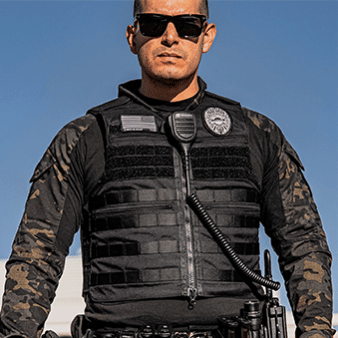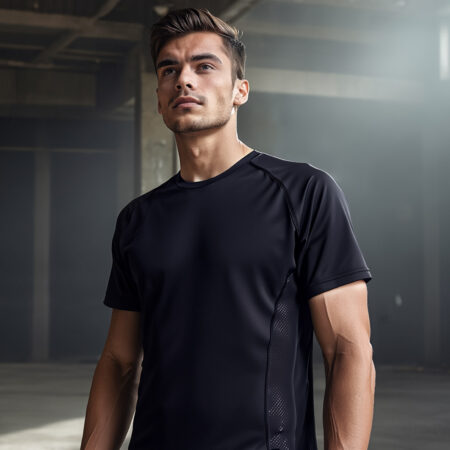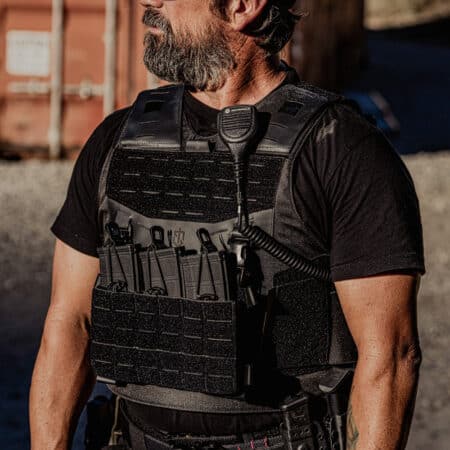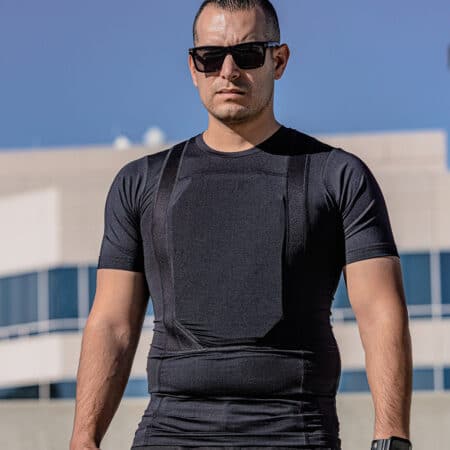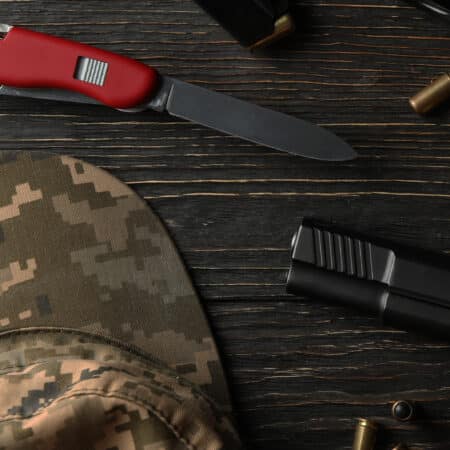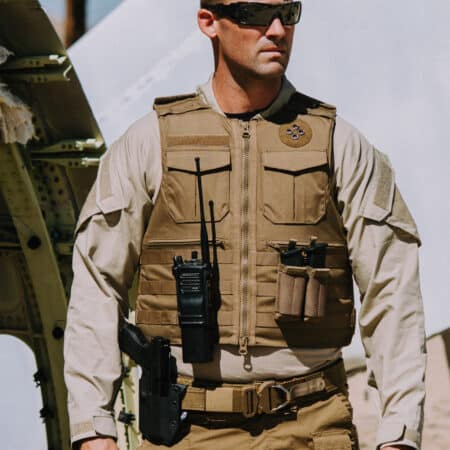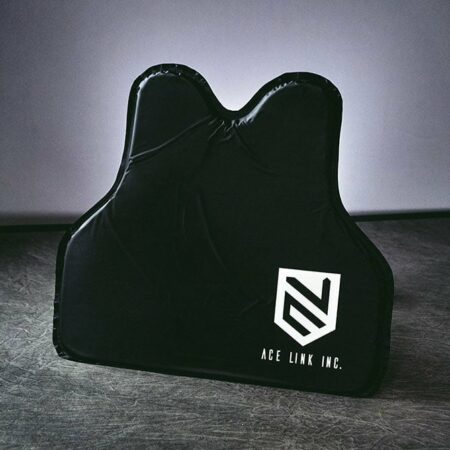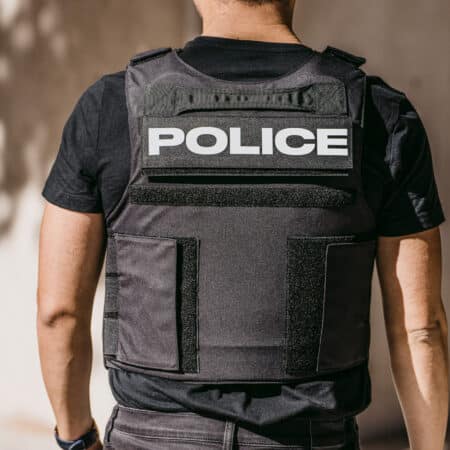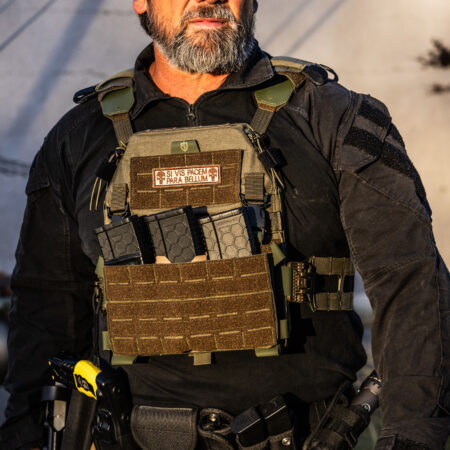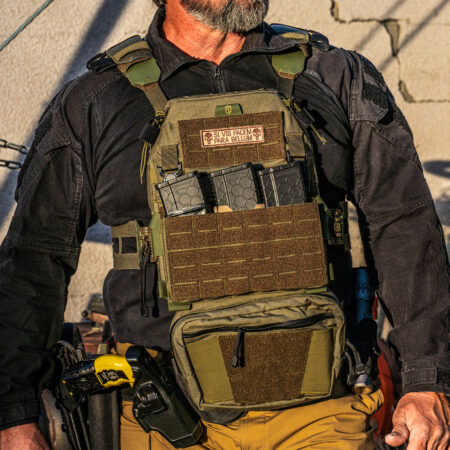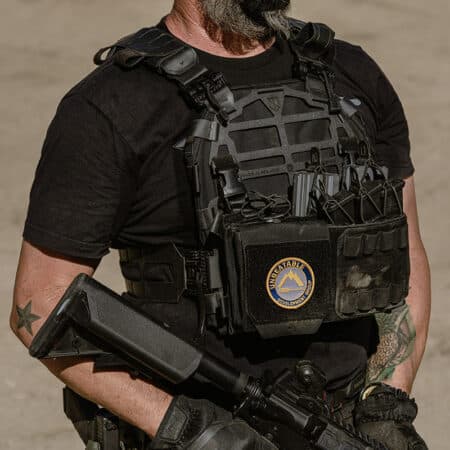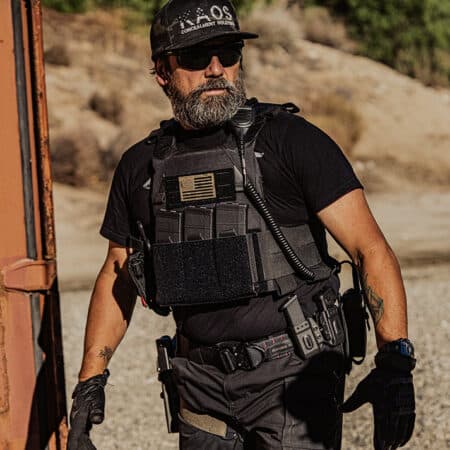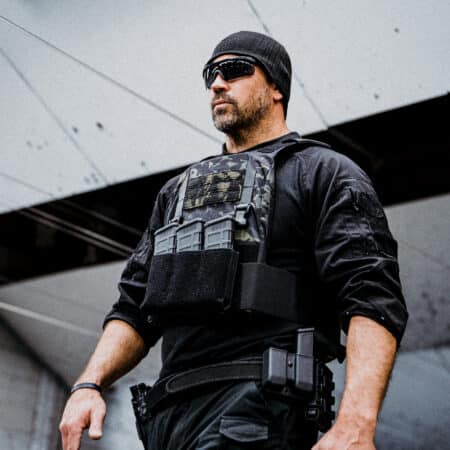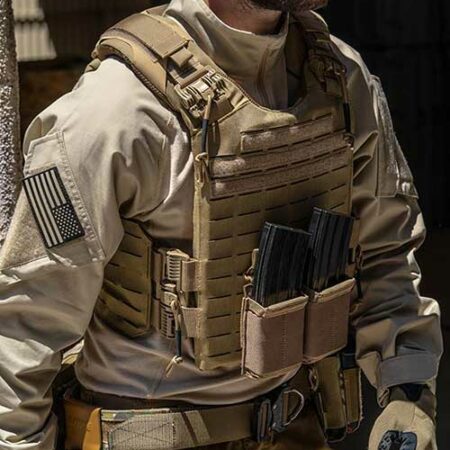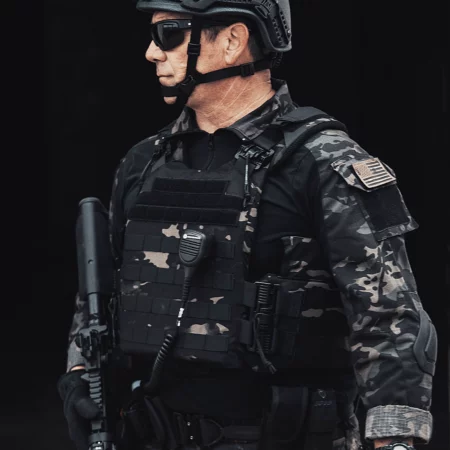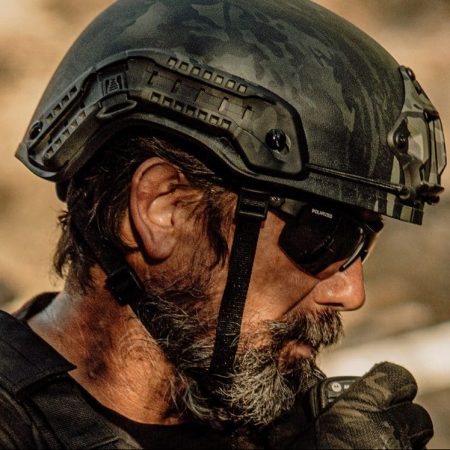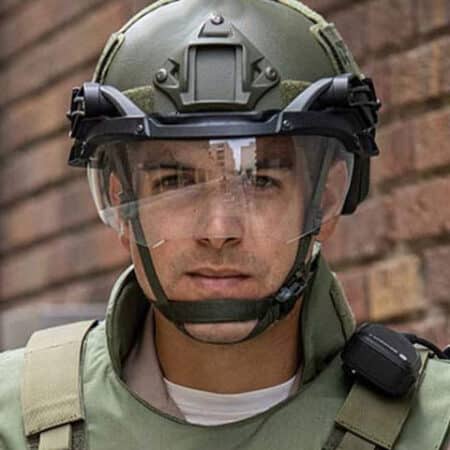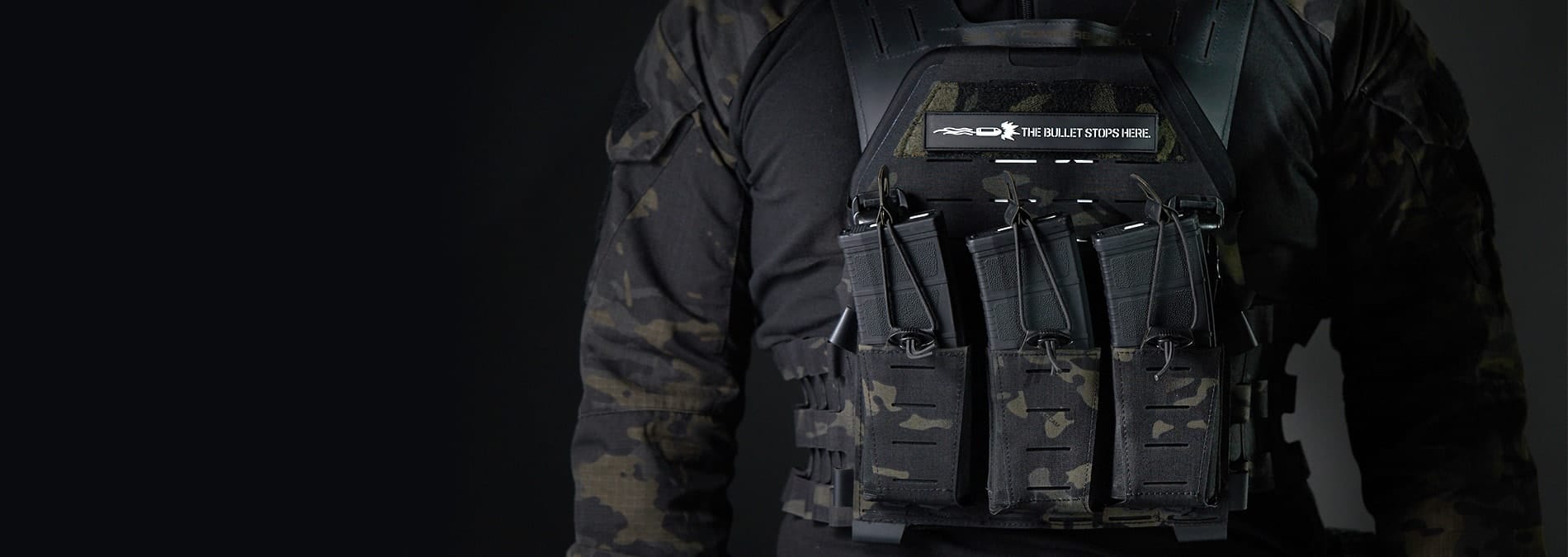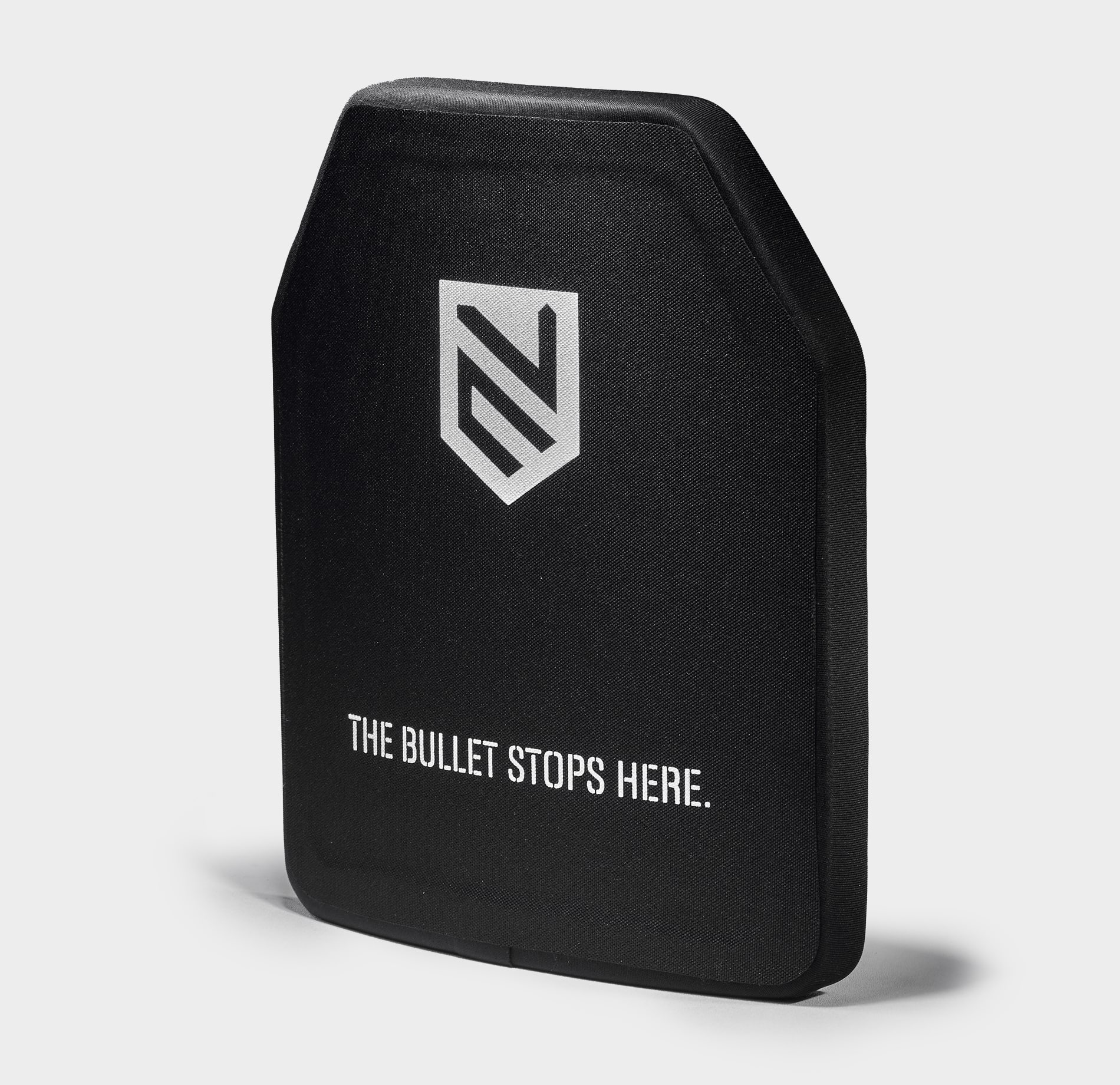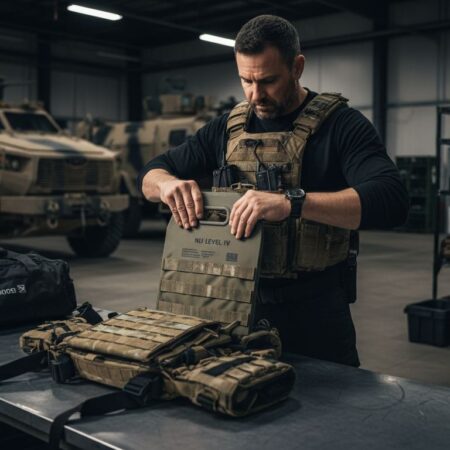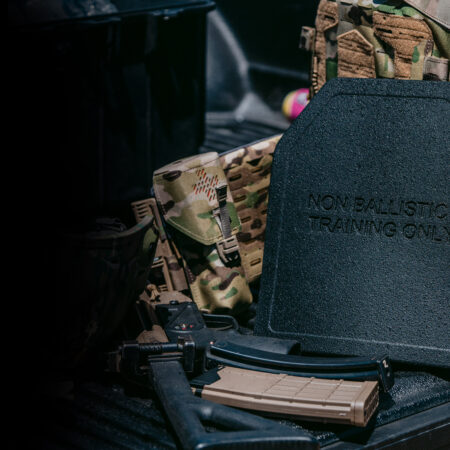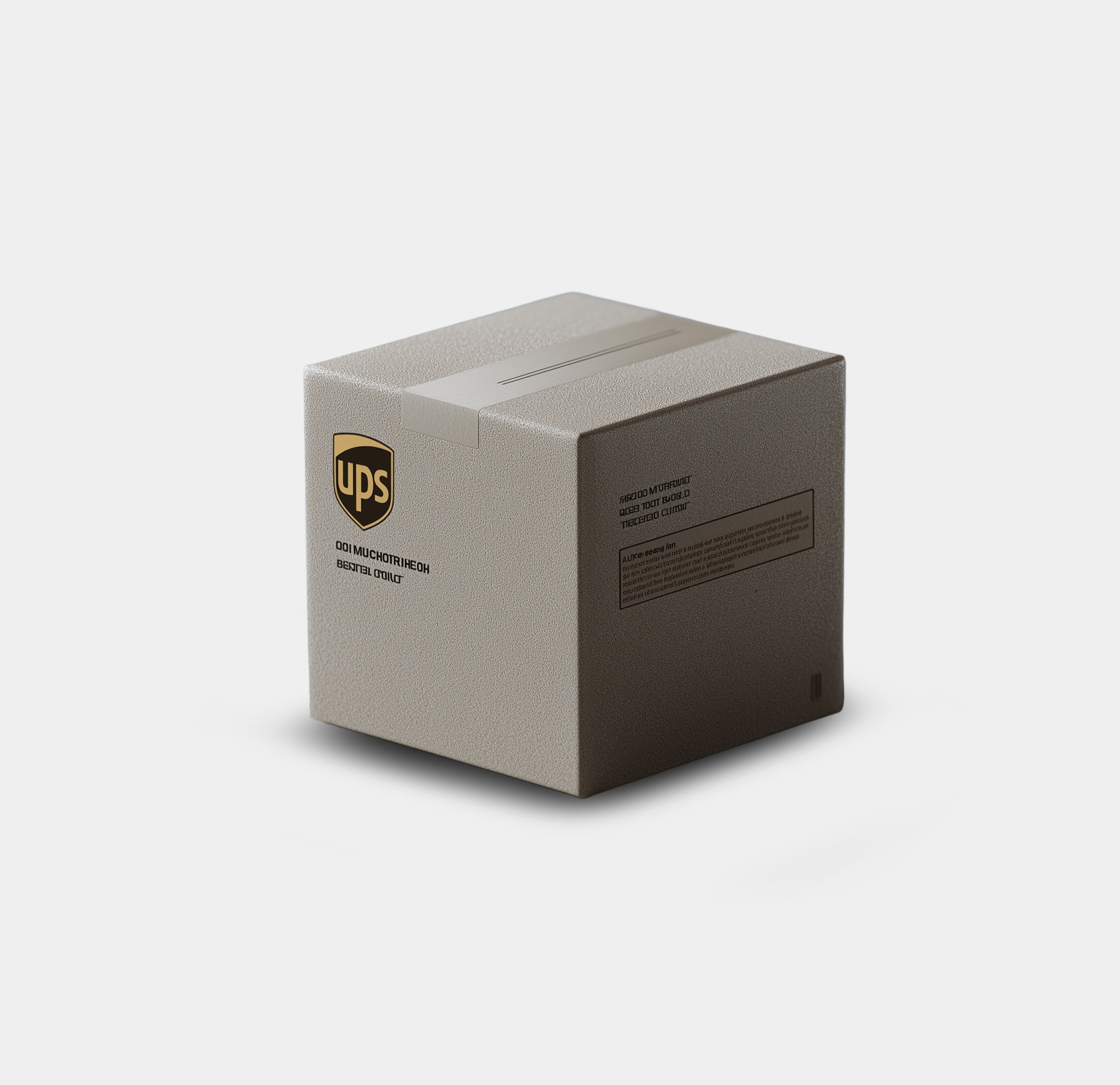Not all types of armor plates are the same. Different kinds of armor are designed to protect you from different weapons and calibers. Therefore, if you are buying armor, you need to know about different body armor protection types and their limits.
HOW LEVEL 4 BODY ARMOR IS CONSTRUCTED?
Since level 4 body armor is supposed to stop high-caliber rifle rounds, they need to be very strong. One approach is to make the plates completely out of steel, like most Level III armor plates, but to stop the heavier and faster rounds, the plate needs to be a lot thicker and can get quite heavy.
Moreover, even though steel armor is the cheapest to make, it can pose certain problems, like Spalling. When a bullet hits a steel plate its fragments can break and be deflected towards innocent bystanders, fellow officers of the person wearing the armor themselves. This is why PE and ceramic composite armor plates hare a better choice, you don’t have to be fit to carry them around.
So, we can say that plain steel plates aren’t suitable for level IV armor, especially since it is going to get hit with much bigger rounds. Therefore, most popular armor companies, including AR500, make their level 4 body armor using UHMW PE and ceramic composite.
So, level 4 body armor plates mainly have three layers. There is a PE backing plate on the back, which has a ceramic layer on it, known as the strike face. The ceramic front is made to break up the incoming bullet, and distribute the impact, which is then absorbed by the PE plate on the back.
Both the steel plate, and ceramic strike face are then covered by a layer of rubber, which also helps in the distribution of force, and keeps the plate in shape after the ceramic strike face is cracked so that the plate can take multiple hits.
That being said, unlike body armor that is made completely of steel, the structural integrity of a ceramic-PE body armor plate is compromised after a few shots. However, with modern ceramic body armor plates, you can keep hitting them with pistols and small rifle rounds like standard AR and AK rounds, and it does deform. However, even pistol rounds can start to crack up the ceramic strike face of the level IV body armor.
Ceramic armor is also lighter, and it prevents spalling. However, it can be more expensive. In recent years, companies have also started to make ultra-lightweight Polyethylene body armor. The material is mostly used to Make level III plates that stop rifle rounds up to a 308.
However, by adding a ceramic strike face to the polyethylene plates, they can be certified to Level 4 and will stop steel core and tactical rifle rounds up to and including 166-grain .30 caliber M2 armor-piercing rounds. When it comes to taking repeated hits, ceramic composite plates are getting better and better. Check our Body Armor Plates section for more information.
WHAT WILL LEVEL 4 BODY ARMOR STOP?
Level II, and Level IIIa body armor plates are made from soft armor aramid or Kevlar. They come in the category of soft body armor and are designed to mainly stop pistol rounds. Level II will stop up to a 158 grain .357. Mag, whereas level III-A will stop up to a 240 grain .44 mag. Soft level III-A body armor is commonly used by Police officers with their standard uniforms, however, in specific combat situations, they also use armor plates.
Level III and Level 4 are armor plates, made of either steel or a combination of steel, ceramics, and other materials like PE. Level III armor plates are rated to stop up to a 308 Winchester (7.62×51), and it will also stop shotgun slugs.
Level IV body armor can stop Level stop up to a .30-06 AP(armor-penetrating) round. This means that Level 4 body armor will also stop all smaller rounds, including Armor Penetrating 308, and all pistol (including Five-Seven, 500 magnum, and 50 AE) and shotgun rounds ( including slugs and SABOT rounds). However, after they are hit a few times, and the ceramic front is shattered, some rounds will start going through.
In some cases, even after the ceramic is completely shattered the steel plate is still capable of stopping the most common rifle rounds ie, 5.56x45mm or the .223 Remington, and 7.62x39mm. However, it is not rated for extended use after being hit.
HOW TO WEAR LEVEL IV BODY ARMOR?
If you are planning on wearing level IV body armor, you need to make sure that you have a good quality plate carrier. Level IV armor plates are heavy, and when you are moving around, the plate will move around in the carrier. In such situations, low-quality plate carriers can be damaged, and lead to problems in the field.
Furthermore, if you are wearing level 4 in the front, you should also wear a level 4 plate in the back of the carrier, otherwise, the carrier will be unbalanced, especially when you add pouches and extra ammunition to the front of the carrier. If you’re using a level III plate in the back, consider getting it in one size larger than the front, so that the weight is balanced, and you also get more coverage in the back.
With the ceramic font, level IV body armor is also thicker than level III plates, therefore, you should adjust the stock of your rifle and your sling accordingly, and check that everything is proper before you step into the field.
BODY ARMOR PLATES FOR YOU
Level IV body armor is usually constructed with a ceramic strike face and a steel back. They can stop almost all rifle rounds, including armor-penetrating 308.s and 30 caliber rounds. If you were thinking about getting Level IV body armor, we hope that this article helps you out.


